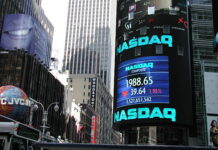Markets
‘Hesitancy’ probably was the appropriate term to describe the market dynamics earlier this week. The heat of the inflation debate subsided, at least temporarily. Fed governors brought a cautious to balanced assessment. ECB speakers mostly highlighted the risk of a premature tightening of monetary conditions. Bonds temporarily found some relieve as did equities. Commodities paused. Dollar showed cracks but an outright break didn’t occur. With only second tier eco data on the agenda, European markets continued this pattern this morning. However, in the run-up to US dealings reflationary spirits finally prevailed again. Equities and yields again were inclined to trend higher. On the interest rate markets, the move was supported by ‘hawkish’ comments from BoE’s Vlieghe (cf infra). US eco data didn’t bring a big surprise, but were mainly constructive. Headline durable goods orders unexpectedly declined 1.3% M/M, but the core measure excluding aircraft and military equipment confirmed the recovery narrative (+2.3%). US Q1 GDP growth was confirmed at 6.4% Q/Qa with strong consumption (11.3%) and an upward revision of the core price deflator (2.5% SAAR). Weekly jobless claims declined more than expected from 444K to 406K. The data were good enough to support the intraday uptrend in core yields. The US yields are rebounding up to 4.0/3.0 bp with the 5Y/10 segment rising most. The move is mainly driven by higher real yields. German yields also change course after a recent correction rising between 0.1 bp (2-y) and 2.7 bp (30-y). 10-yr peripheral spreads versus Germany mostly trade marginally tighter despite higher core yields. Eco data seldom play an important role for intra-EMU spreads. Even so, Italian investors today might have received some conformt from strong domestic confidence data. After an uninspiring start, European equities mostly show modest gains, with the EuroStoxx 50 (+0.5%) again nearing the cycle top. US equities also open marginally stronger.
Of late, sterling lacked a clear directional narrative. However, BoE’s Vlieghe’s comments on a potential rate hike already next year triggered an intraday jump of the UK currency. EUR/GBP dropped from the 0.8640 area to the low 0.86 area. Vlieghe made a positive eco/rate hike scenario conditional on a smooth recovery of the labour market after the end of the furlough scheme. He also elaborated on scenarios that would need longer/more policy support. However, FX traders focused on the positives. Cable jumped from 1.4120 to 1.417. The dollar maintained yesterday’s rebound off key support levels, but for now fails to extend gains. The trade-weighted dollar holds near 90. EUR/USD is hovering around the 1.22 big figure. USD/JPY profits most from the rise in core/US (real) yields, regaining the 109 barrier (currently 109.35). The dollar bought some time but the picture remains unconvincing. We look out for tomorrow’s reaction of the dollar to an expected record trade deficit.
News Headlines
US President Biden is to propose a $6tn budget for the 2022 fiscal year and for total spending to rise to $8.2tn by 2031, the New York Times reported based on documents it was able to obtain. The increase in spending follows Biden’s agenda to boost the country’s infrastructure and expand the social safety net of which the details have been outlined in his American Jobs Plan and American Families Plan. Under the plans, the US would run massive deficits that would already hit $1.8tn in 2022 and are seen above $1.3tn throughout the next decade. His plan at this stage is a request to Congress, which has to approve first. If it would, the US government would spend almost 25% of GDP every year to 2031.
ECB governing council member Weidmann said that fiscal support to the economy shouldn’t be unwound prematurely but neither should the pandemic be used to toss the fiscal rules overboard. He doesn’t oppose adaptations of the rules however. Talking about his home country Germany, Weidmann said he doesn’t share the critique on the debt brake which prevents Germany from spending at will.











